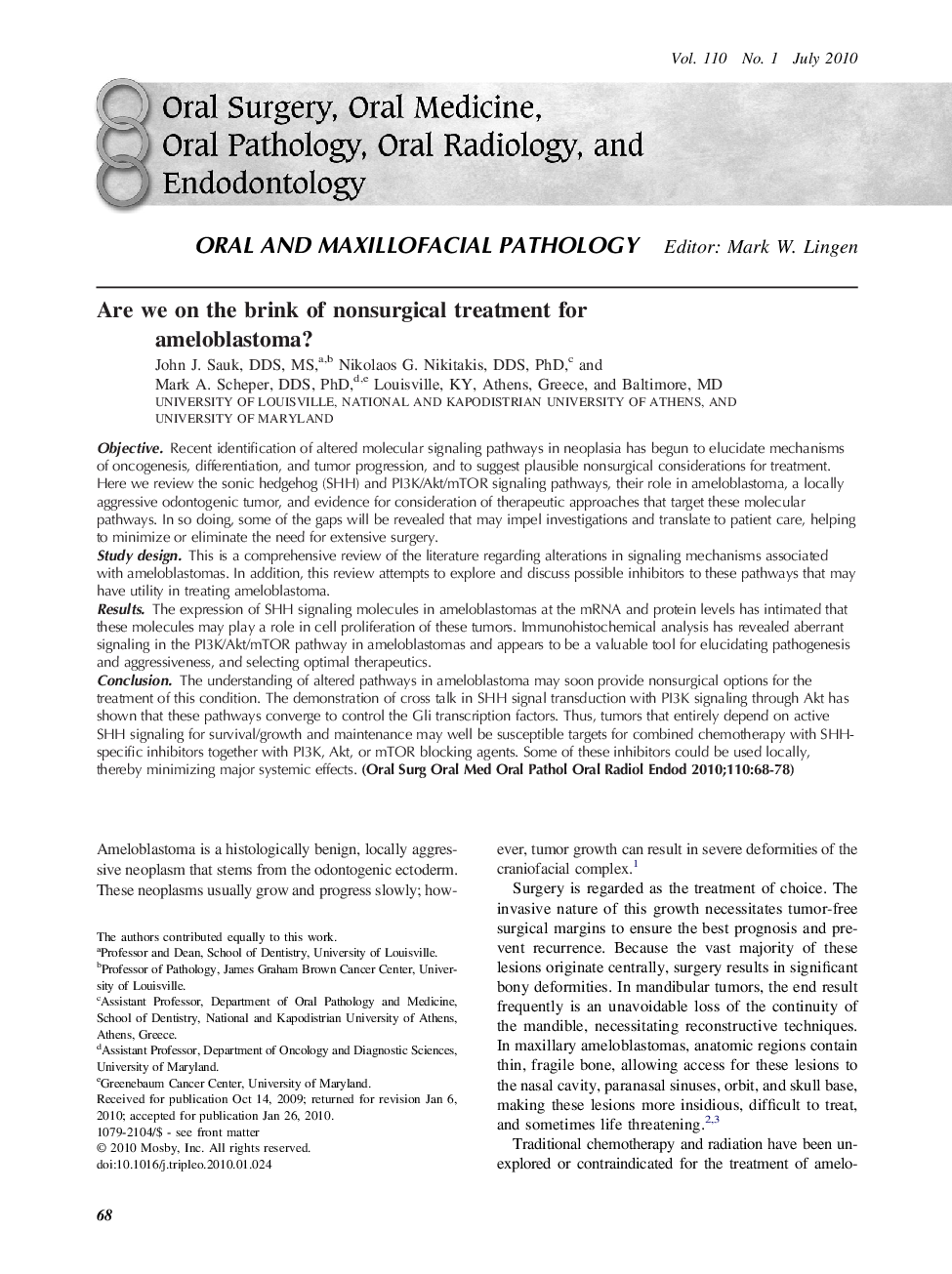| Article ID | Journal | Published Year | Pages | File Type |
|---|---|---|---|---|
| 3167553 | Oral Surgery, Oral Medicine, Oral Pathology, Oral Radiology, and Endodontology | 2010 | 11 Pages |
ObjectiveRecent identification of altered molecular signaling pathways in neoplasia has begun to elucidate mechanisms of oncogenesis, differentiation, and tumor progression, and to suggest plausible nonsurgical considerations for treatment. Here we review the sonic hedgehog (SHH) and PI3K/Akt/mTOR signaling pathways, their role in ameloblastoma, a locally aggressive odontogenic tumor, and evidence for consideration of therapeutic approaches that target these molecular pathways. In so doing, some of the gaps will be revealed that may impel investigations and translate to patient care, helping to minimize or eliminate the need for extensive surgery.Study designThis is a comprehensive review of the literature regarding alterations in signaling mechanisms associated with ameloblastomas. In addition, this review attempts to explore and discuss possible inhibitors to these pathways that may have utility in treating ameloblastoma.ResultsThe expression of SHH signaling molecules in ameloblastomas at the mRNA and protein levels has intimated that these molecules may play a role in cell proliferation of these tumors. Immunohistochemical analysis has revealed aberrant signaling in the PI3K/Akt/mTOR pathway in ameloblastomas and appears to be a valuable tool for elucidating pathogenesis and aggressiveness, and selecting optimal therapeutics.ConclusionThe understanding of altered pathways in ameloblastoma may soon provide nonsurgical options for the treatment of this condition. The demonstration of cross talk in SHH signal transduction with PI3K signaling through Akt has shown that these pathways converge to control the Gli transcription factors. Thus, tumors that entirely depend on active SHH signaling for survival/growth and maintenance may well be susceptible targets for combined chemotherapy with SHH-specific inhibitors together with PI3K, Akt, or mTOR blocking agents. Some of these inhibitors could be used locally, thereby minimizing major systemic effects.
